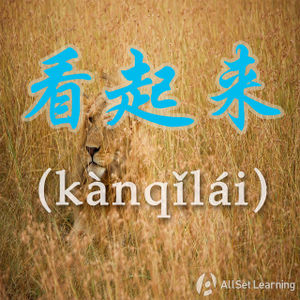Difference between revisions of "Appearance with "kanqilai""
ViktorMugli (talk | contribs) |
|||
| Line 1: | Line 1: | ||
| + | {{Grammar Box}} | ||
| + | |||
== Structure == | == Structure == | ||
| Line 22: | Line 24: | ||
==See also== | ==See also== | ||
| − | + | {{Similar|Result complement "-qilai"}} | |
| − | + | {{Similar|"It seems" with "haoxiang"}} | |
== Sources and further reading == | == Sources and further reading == | ||
| Line 30: | Line 32: | ||
[[Category:B1 grammar points]] | [[Category:B1 grammar points]] | ||
| + | |||
| + | {{Basic Grammar|看起来|B1|看起来……|这 个 <em>看 起来</em> 很 漂亮。|grammar point|ASG9K0F8}} | ||
Revision as of 06:11, 13 June 2012
-
Level
-
Similar to
-
Used for
-
Keywords
Structure
To express that something "looks" or "looks like", 看起来 (kànqǐlái) is often used.
Subject + 看起来 + Adjective
The subject can be omitted, in which case 看起来 can be followed with a whole statement.
Examples
- 这 个 看 起来 很 漂亮。
- 他 看 起来 很 友好。
- 这 些 食物 看 起来 很 好吃。



